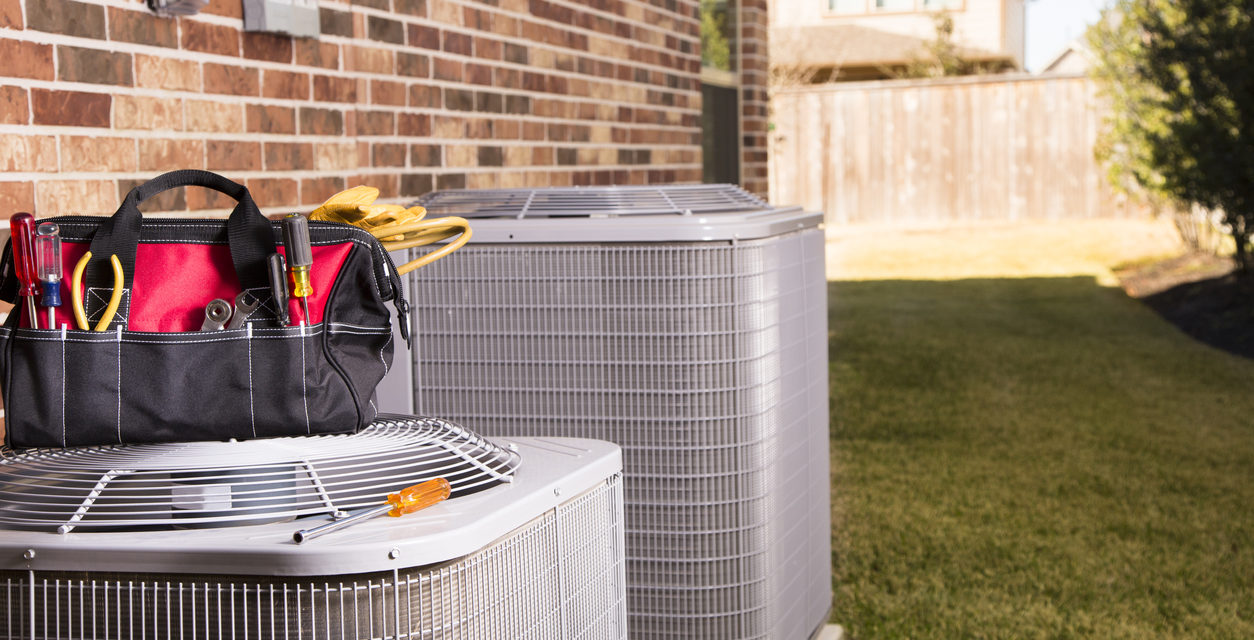My air-conditioning pipes freeze. Am I doing something wrong, or is the system defective?
Answer: It appears that you’re somehow restricting the air flow to the system. Without a sufficient draft across the evaporator coils (that box sitting on top of the furnace where the heat transfer takes place), the system gets out of balance and freezes. First, check to see if your furnace filter needs changing; install a new one at least once a month.
If the freezing continues, have a heating contractor check the system. They will check the pressure in the refrigerant lines with the system running to make sure it’s operating normally. They also might clean those coils. Air conditioning is a dehumidification process that produces lots of water, condensed out of the air in your home. That’s why we have that condensate (drip) line leading out from the evaporator coils. The moisture tends to exacerbate the collection of dust and dirt inside the cooling enclosure. That layer acts like an insulator, which similarly overloads the compressor. Once the evaporator coils are cleaned and unblocked, the freezing probably will stop.
Our older toilet doesn’t always empty itself. None of the other drains is acting slowly. What could be the problem?
Answer: You may need to clean out the holes under the rim. Use an awl, an Allen wrench or some stiff wire to remove scale and rust that might have accumulated. If your toilet has an inlet hole in the bottom of the bowl (a so-called siphon jet), you should clean it out, too. That flow is what starts the siphoning of material out of the bowl.
Check the flush valve (flapper) inside the tank. Does it stay open long enough? Does it open all the way, or is it blocked by the overflow tube? If you have any doubt, replace it. If you still lack flushing power, you might need to remove the toilet from the floor and look for some obstruction either under the bowl or in the now-exposed piping.
I’ve gotten an air conditioning bid for my 2,970-square-foot ranch-style home. They want to put in a 5-ton Goodman, a brand unfamiliar to me. Do you know if I’m on the right track?
Answer: Goodman is a brand well known to the air-conditioning trades and home builders. Others include Rheem, Trane, Carrier and Lennox. Any of these would be a good choice. If possible, I like to marry same brands. So if you can, choose the same manufacturer as that of your furnace.
Five tons sounds like a Texas- or Arizona-sized unit, one that might be so underutilized that it freezes (see above). Unless something is unusual about your home, I would guess a 3-ton system would work.
I think you need to start over. First, you’ll want three competitive estimates. Let the first company set the specifications — that is, the apples-to-apples comparisons you’ll make with the other companies. If they specify, for instance, a basic 3-ton unit with a 13 SEER (seasonal energy efficiency ratio) — the minimum now required — then make the other two bidders stick with that specification. Otherwise, you’ll never be able to compare prices. Avoid the super high-efficiency models. Higher SEER ratings can cost hundreds more, but our cooling season is so short that I don’t think they make economic sense.
You can expect to pay $3,000 to as much as $5,000 for the A/C installation, depending on the location of your electric panel and distance to the furnace.
How can I wallpaper over textured walls? I tried to use pre-pasted paper, but it fell off. Is that because the walls are textured?
Answer: The texture probably had less to do with it than the lack of surface preparation. Any residual dirt or cooking “pollution” in a kitchen needs to be washed off with some white vinegar and water. That will de-grease them, but they’ll still need to be de-glossed. Use some fine sandpaper, say 320 grit, to lightly sand the slick surface of the old paint. Then your pre-pasted wallpaper will cling just fine. This all works pretty well for a “knockdown” textured finish — that is, one that had the bumps troweled flat before the finish dried. If yours is heavier, you may want to install a liner paper to hide the bumps, especially if your wallpaper is a little shiny or glossy.
It’s important to just wet — not soak — the new paper. Fold it in on itself, glue-to-glue, and let it “relax” for five minutes or so. That will ensure that the adhesive is fully activated.
Moon is a home inspector in the Pikes Peak region. His radio show airs at 9 a.m. Saturdays on KRDO, FM 105.5 and AM 1240. Visit aroundthehouse.com

 Photo Credit: fstop123 (iStock)
Photo Credit: fstop123 (iStock) 



Comment on: How to Fix Frozen Air-Conditioning Pipes